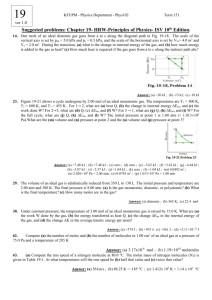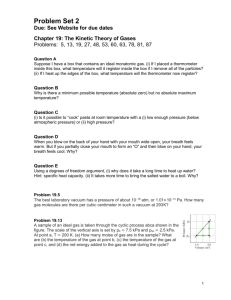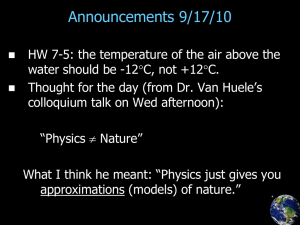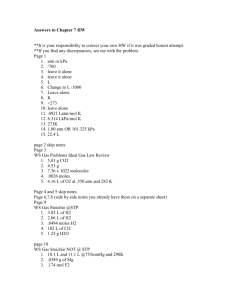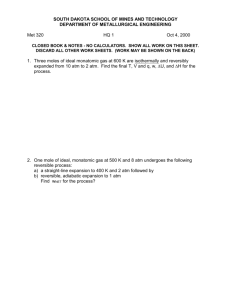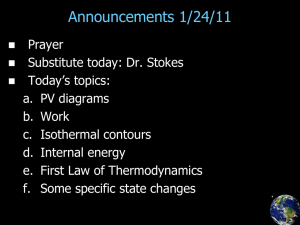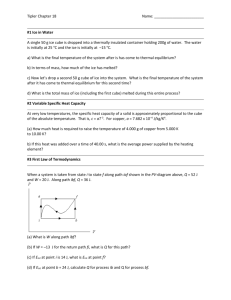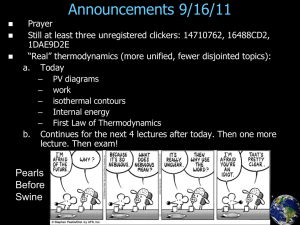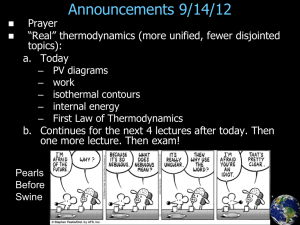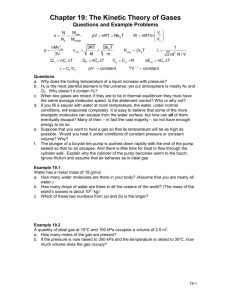HW-Ch-19
advertisement
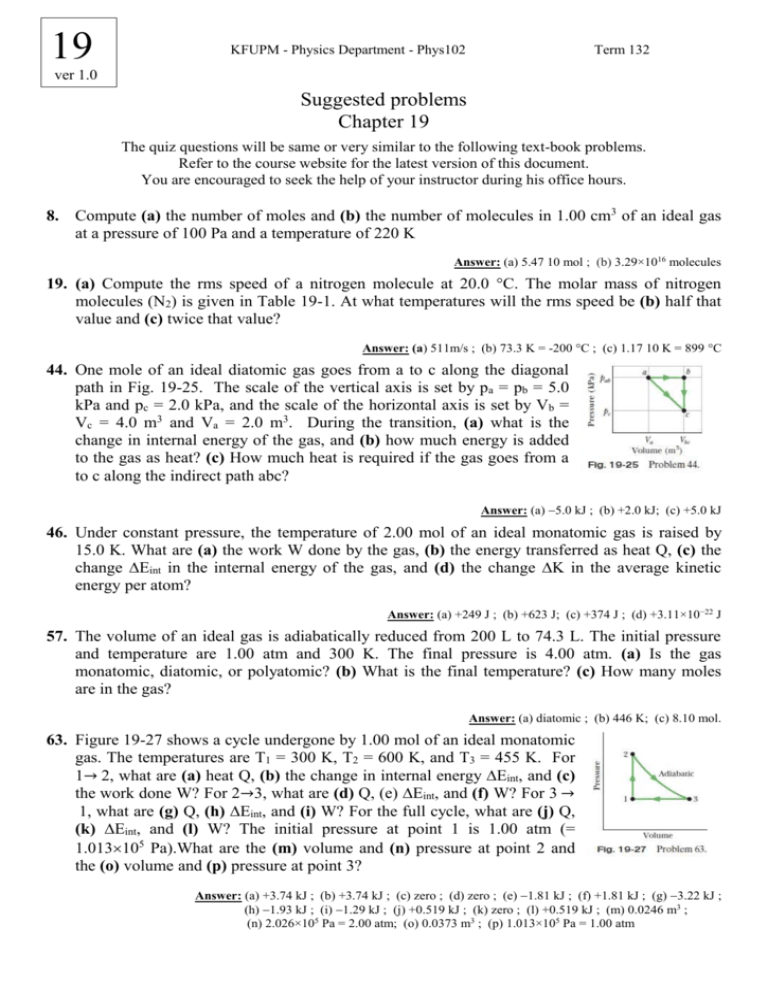
19 KFUPM - Physics Department - Phys102 Term 132 ver 1.0 Suggested problems Chapter 19 The quiz questions will be same or very similar to the following text-book problems. Refer to the course website for the latest version of this document. You are encouraged to seek the help of your instructor during his office hours. 8. Compute (a) the number of moles and (b) the number of molecules in 1.00 cm3 of an ideal gas at a pressure of 100 Pa and a temperature of 220 K Answer: (a) 5.47 10 mol ; (b) 3.29×1016 molecules 19. (a) Compute the rms speed of a nitrogen molecule at 20.0 °C. The molar mass of nitrogen molecules (N2) is given in Table 19-1. At what temperatures will the rms speed be (b) half that value and (c) twice that value? Answer: (a) 511m/s ; (b) 73.3 K = -200 °C ; (c) 1.17 10 K = 899 °C 44. One mole of an ideal diatomic gas goes from a to c along the diagonal path in Fig. 19-25. The scale of the vertical axis is set by pa = pb = 5.0 kPa and pc = 2.0 kPa, and the scale of the horizontal axis is set by Vb = Vc = 4.0 m3 and Va = 2.0 m3. During the transition, (a) what is the change in internal energy of the gas, and (b) how much energy is added to the gas as heat? (c) How much heat is required if the gas goes from a to c along the indirect path abc? Answer: (a) 5.0 kJ ; (b) +2.0 kJ; (c) +5.0 kJ 46. Under constant pressure, the temperature of 2.00 mol of an ideal monatomic gas is raised by 15.0 K. What are (a) the work W done by the gas, (b) the energy transferred as heat Q, (c) the change ∆Eint in the internal energy of the gas, and (d) the change ∆K in the average kinetic energy per atom? Answer: (a) +249 J ; (b) +623 J; (c) +374 J ; (d) +3.11×10−22 J 57. The volume of an ideal gas is adiabatically reduced from 200 L to 74.3 L. The initial pressure and temperature are 1.00 atm and 300 K. The final pressure is 4.00 atm. (a) Is the gas monatomic, diatomic, or polyatomic? (b) What is the final temperature? (c) How many moles are in the gas? Answer: (a) diatomic ; (b) 446 K; (c) 8.10 mol. 63. Figure 19-27 shows a cycle undergone by 1.00 mol of an ideal monatomic gas. The temperatures are T1 = 300 K, T2 = 600 K, and T3 = 455 K. For 1→ 2, what are (a) heat Q, (b) the change in internal energy ∆Eint, and (c) the work done W? For 2→3, what are (d) Q, (e) ∆Eint, and (f) W? For 3 → 1, what are (g) Q, (h) ∆Eint, and (i) W? For the full cycle, what are (j) Q, (k) ∆Eint, and (l) W? The initial pressure at point 1 is 1.00 atm (= 1.013105 Pa).What are the (m) volume and (n) pressure at point 2 and the (o) volume and (p) pressure at point 3? Answer: (a) +3.74 kJ ; (b) +3.74 kJ ; (c) zero ; (d) zero ; (e) 1.81 kJ ; (f) +1.81 kJ ; (g) 3.22 kJ ; (h) 1.93 kJ ; (i) 1.29 kJ ; (j) +0.519 kJ ; (k) zero ; (l) +0.519 kJ ; (m) 0.0246 m3 ; (n) 2.026×105 Pa = 2.00 atm; (o) 0.0373 m3 ; (p) 1.013×105 Pa = 1.00 atm
